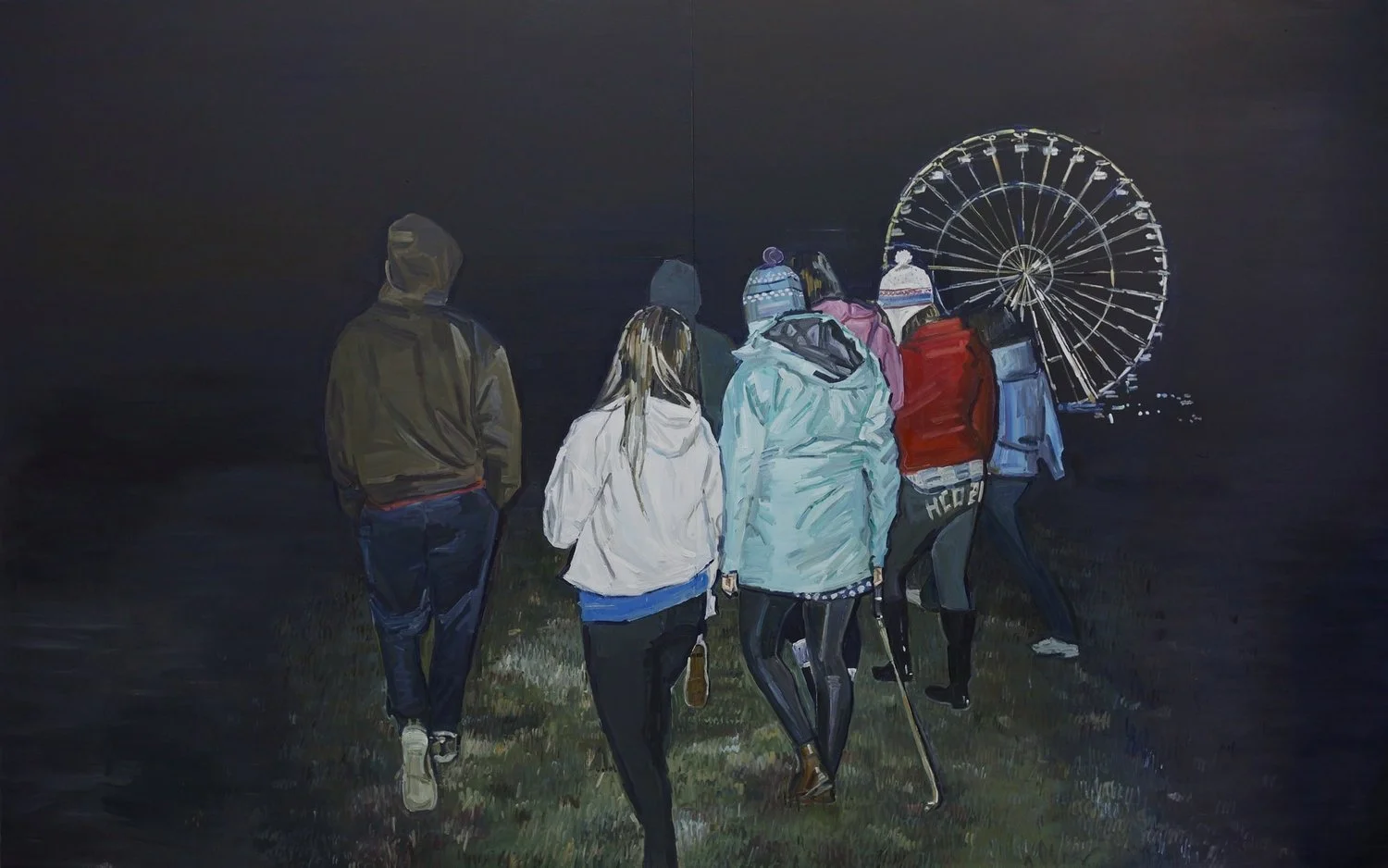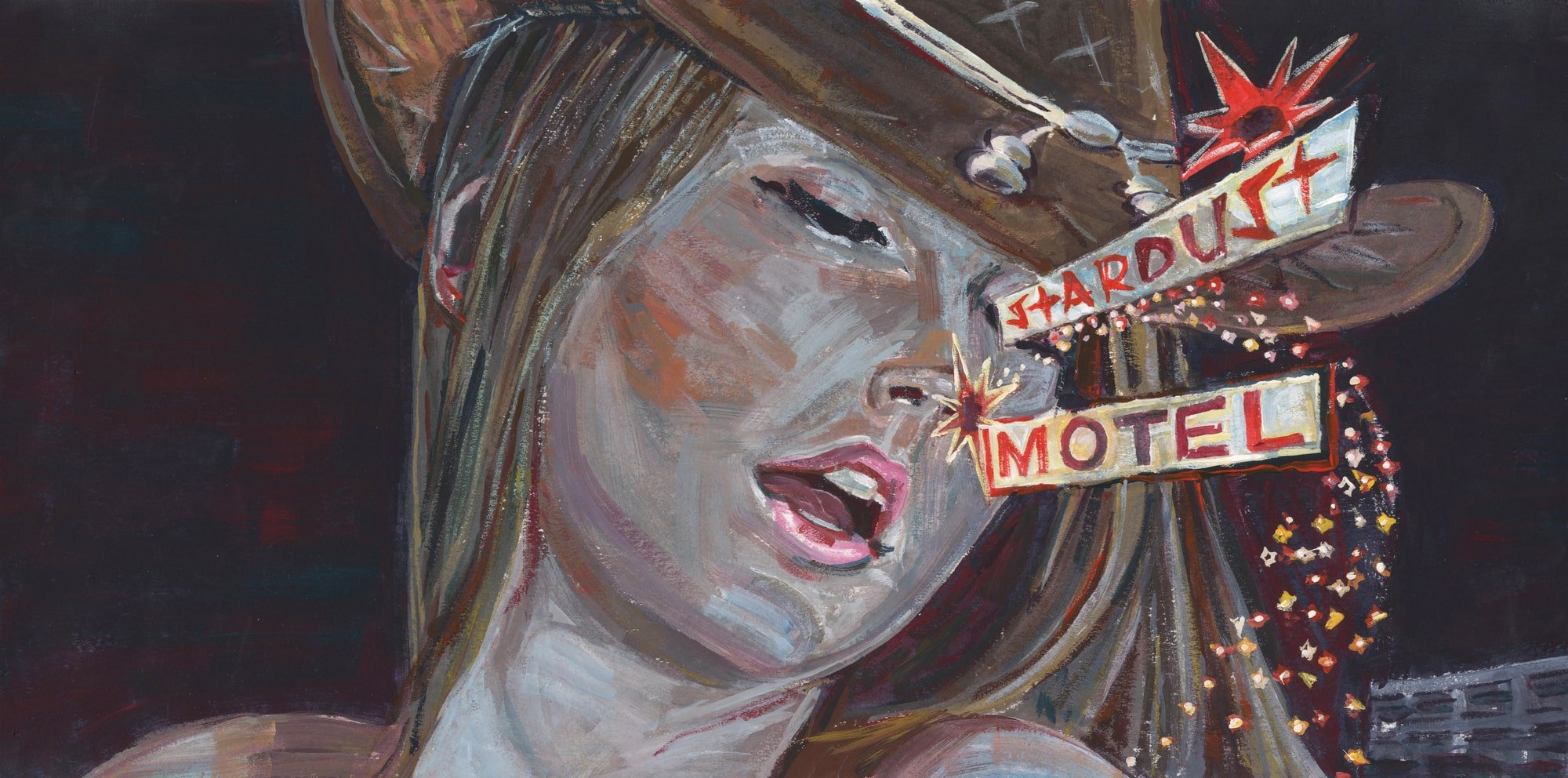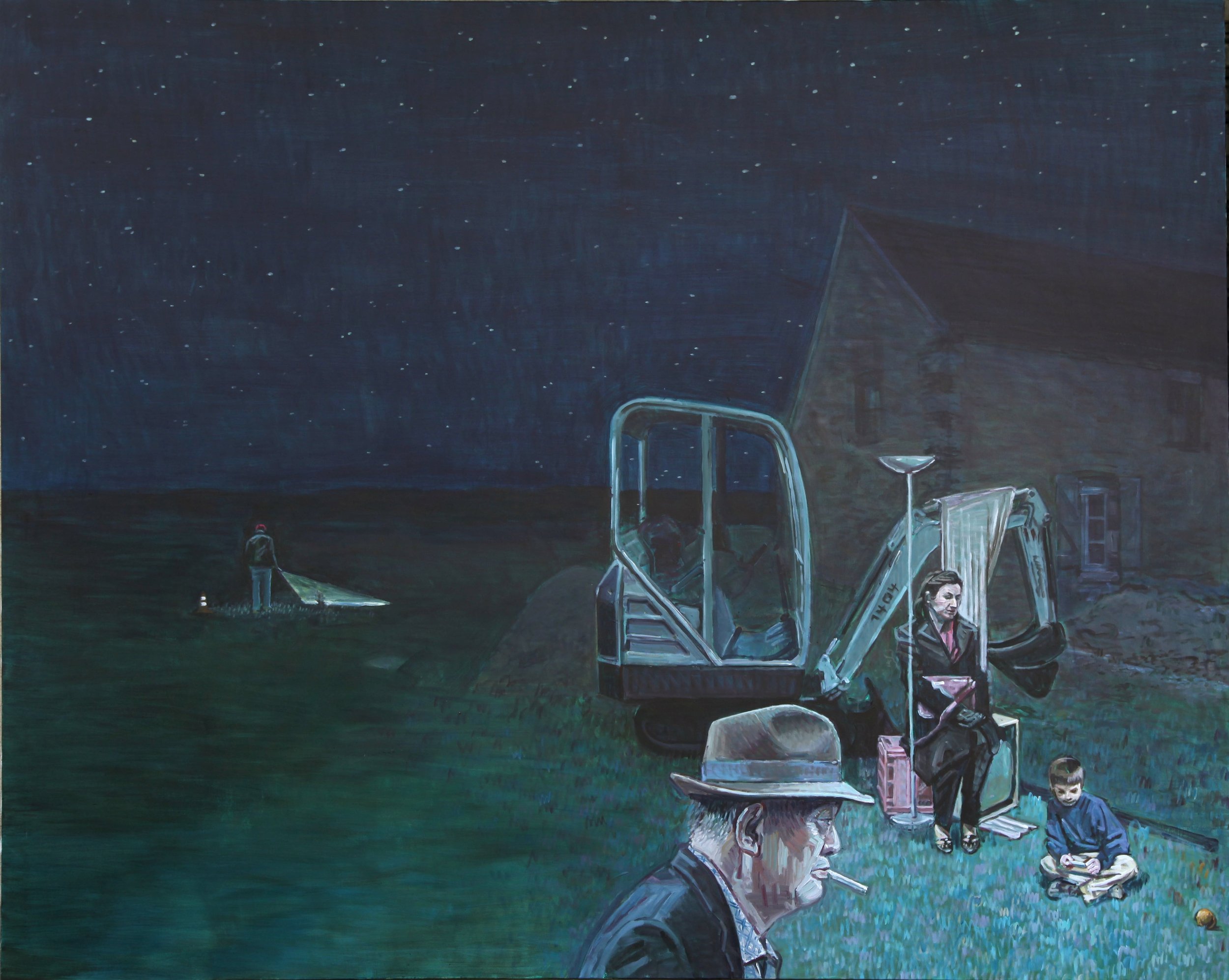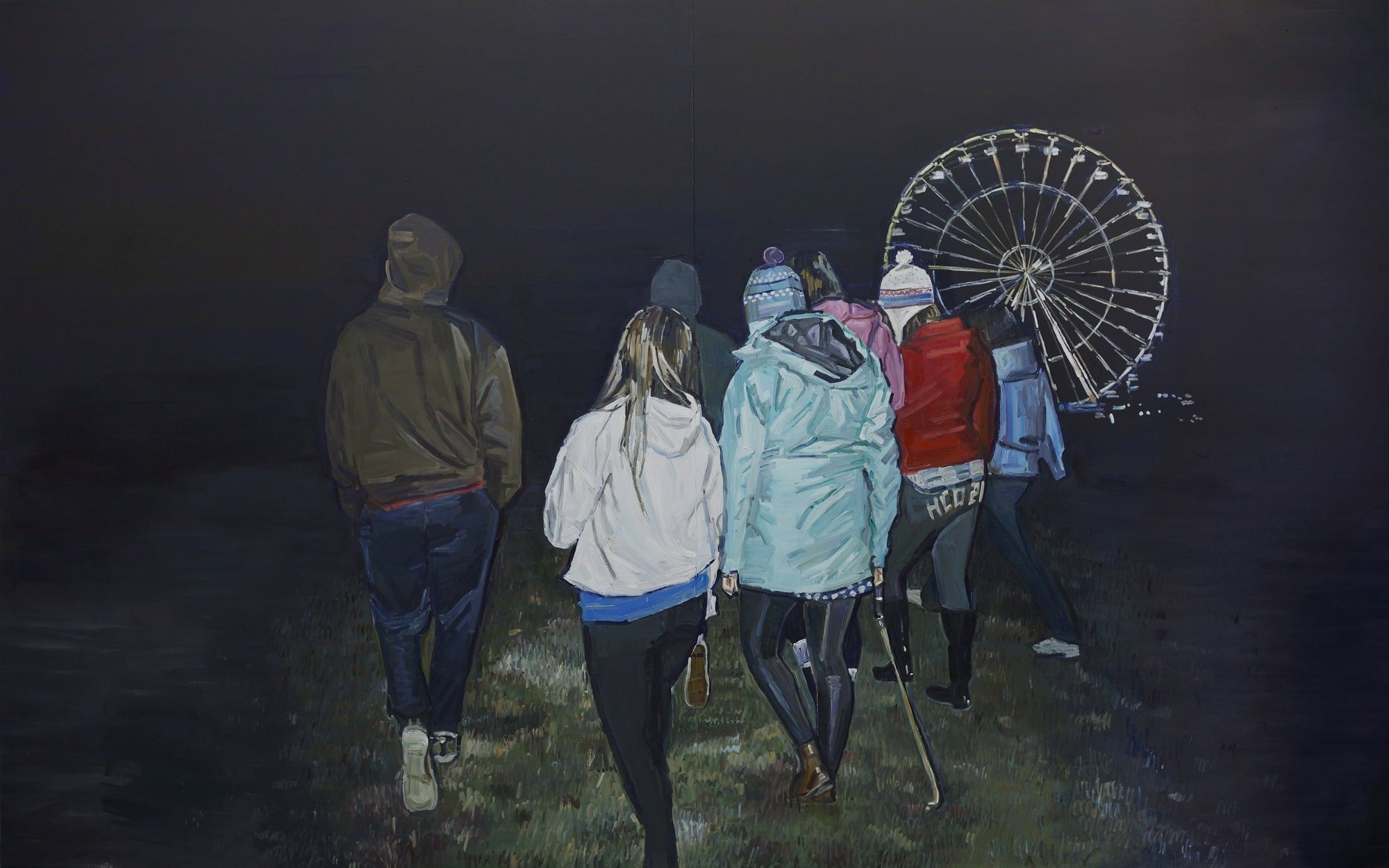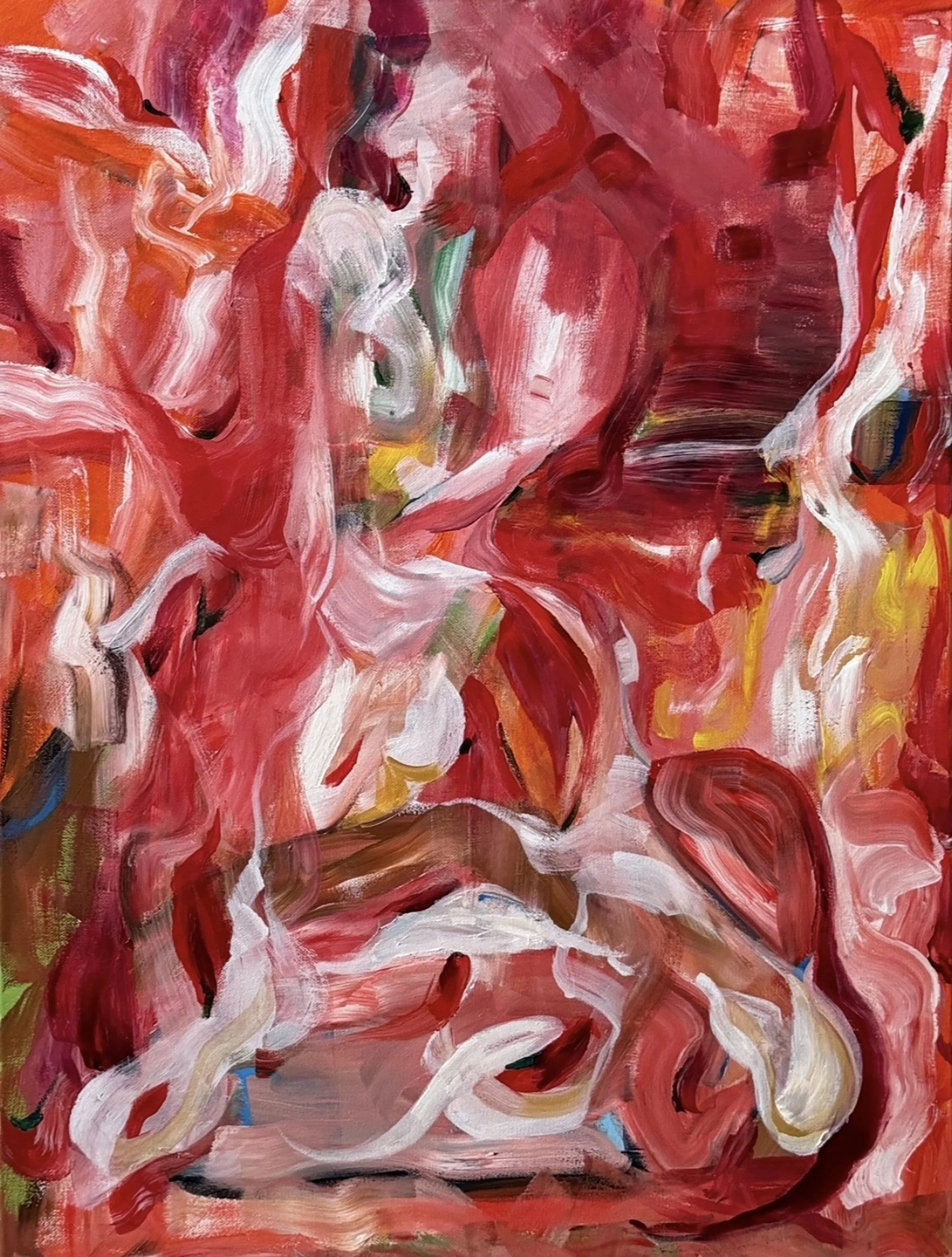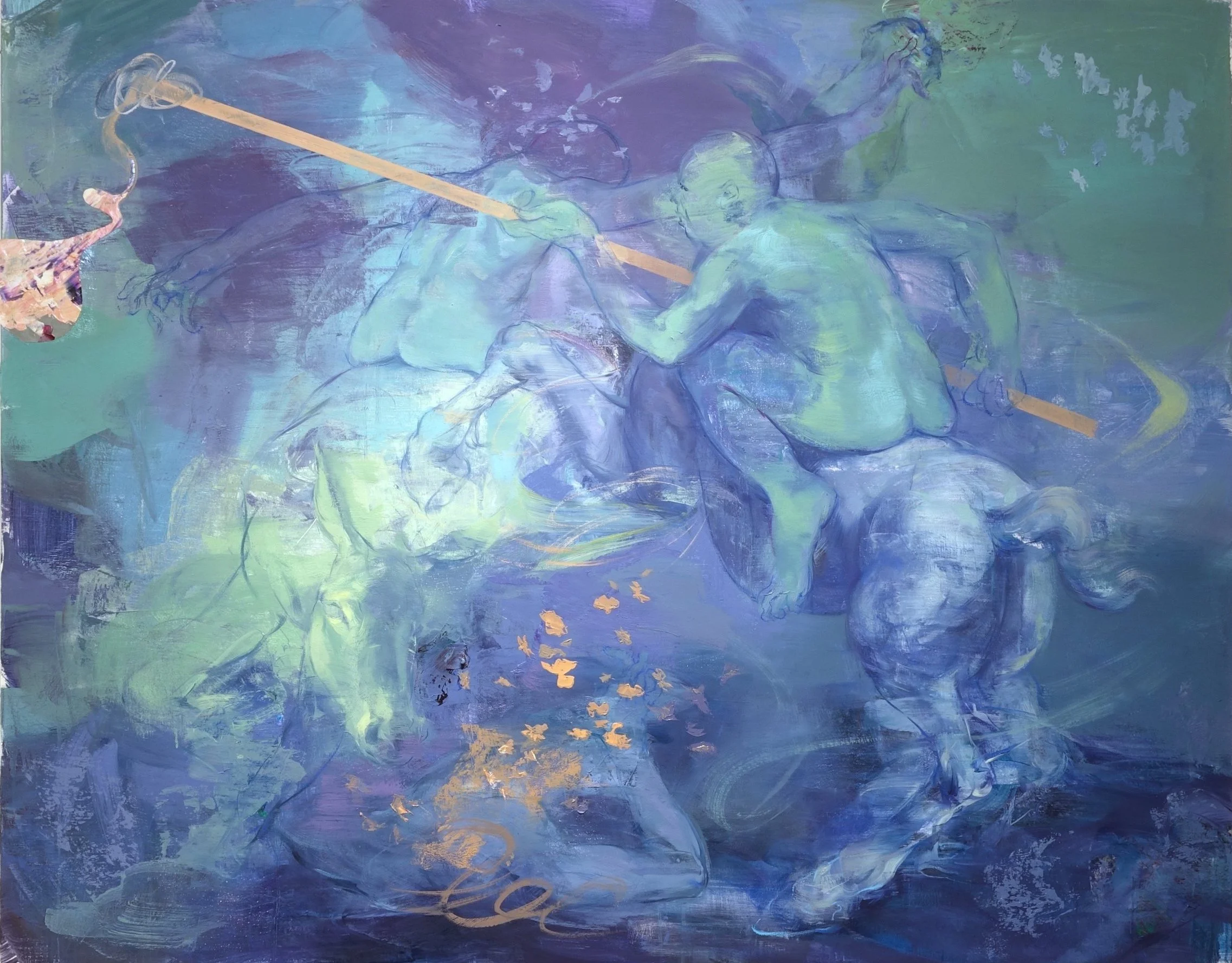10 Questions with Olivier Larivière
Olivier Larivière (Saint Germain-en-Laye, France, 1978) lives and works in Montreuil, in the Parisian suburbs. After a Masters in Applied Arts at ENSAD Paris, and a scholarship to SVA, New York, which rewards artistic excellence, he turned to a career as a painter. He obtained various art residencies, including the Casa de Velázquez in Madrid in 2011. He received the Gérard Fromanger prize at the Antoine Marin Prize in 2011, which rewards young rising figures of contemporary painting in France, and has participated in many numerous group or solo exhibitions in France, Belgium, and Spain.
Olivier Larivière Portrait
ARTIST STATEMENT
Olivier Larivière believes art is not just embellishment or the representation of outward appearances but rather is an essential act that reveals the inward significance of things. He sees his work as a window to the life-giving mystery of who and why, and what we are.
The painter wants to somehow communicate his sense of what life is to him, with its absurdity, transitory and ephemeral nature, abundance, and emptiness. Each painting develops a dialectic made up of contradictory notions: the event or non-event, the known and the unknown, being and appearing, desire and despair, free will and fatality, dream and down to earth aspects of life.
His work depicts the epiphanies and wanderings of fallen heroes, magnificent losers, ordinary misfits, pulling the narrative thread of incongruous or absurd situations until it breaks. The no man’s lands that they furtively inhabit, always in transit and protected by the night, send back the image of a floating world with an unstable content that one walks with uncertain pace.
INTERVIEW
Introduce yourself to the Al-Tiba9 readers. Who are you, and how did you become a painter?
I lived in Normandy as a child, near Rouen. I moved to Paris to study art when I was 20 and have lived in its suburb (Montreuil) since then. I have both studied in a school of applied arts (ENSAD Paris) and a school of fine arts (ENSBA, Paris), but very early on during my studies, it became clear I wanted to be a visual artist, especially a painter.
Why did you choose this career path? Did it fulfill your expectations so far?
I have a mother who has always been fond of art and antiques, and I have this memory of being an impatient child waiting for her while she was staring at antiques in shops or looking at artworks in a museum. It has influenced me some way later, but I was bad in academic subjects at school, and I always loved to draw. The choice of studying art was just as simple as that, in the beginning.
Can you tell us about the process of creating your work? What is your artistic routine when working?
The process of creating artworks has constantly evolved since I finished art school. Finding a routine has always been a source of frustration because I felt a strong urge to develop an iconography of my own on one side (it takes me ages to develop compositions and subject matters I am satisfied with). And I have this other urge to paint constantly, and this practice comes, to the opposite, pretty naturally, easily. I would paint every single day if I wasn't stopped by a deep question about what I want and why I do that, what it means. This sort of internal conflict is over now, and I'm at peace with it, but it occupied my mind for quite some time. I accept now I have to be less productive.
I feel my artistic routine is very similar to that of a movie director. There is a first stage when I work on a new iconographic body of work on inter-related pictures by making photo collages on Photoshop: photographs I shot, photographs I find on the web. To me, it is very similar to the pre-production stage that a director goes through when he writes a story with a screenwriter.
Then only comes the second stage when I paint physically in the studio compositions I preliminary designed on Photoshop. It's really the production or the shooting stage. I often make changes to what I preliminarily composed virtually on screen, as working physically at a different scale makes me appreciate in a different way what I have composed before.
Untitled (from Hic & Nunc series), Oil on linen, 182x270 cm, 2015 © Olivier Larivière
Untitled (from Hic & Nunc series), Oil on linen, 200x250 cm, 2017 © Olivier Larivière
You quote many different references for your work, from "the XVII Century Flemish genre painting and French romanticism to contemporary realist painters such as Eric Fischl" and movie directors such as Wim Wenders Coen Brothers, and Gus Van Sant. What are the common traits between such diverse influences? And how do you incorporate them into your work?
I always feel the number of influences could be endless. But my work revolves around depicting the mystery of man for man, representing the human condition and its ways out. I believe that art should directly reach people by dealing with universal issues through images that echo their personal experiences. I do that through narrative and figurative art. Stories are what speak so much to me and to all of us, I believe.
Now when it comes to narratives in art, you can see it in history painting, considered the highest art form in the XVIIth, XVIIIth centuries in the hierarchy of genres, but you can also find it nowadays in movies. I feel very influenced by history painting, its monumentality, and desire to reach a form of grandeur and universality by using allegories or sharing events worth imitating, such as history painting does with examples and events from the Bible or mythology.
But I also profoundly dislike in history painting this idea of finding a noble subject to depict. That's why I'm interested in genre painting, especially Flemish. It takes its inspiration from everyday life and doesn't care to represent something virtuous or honourable. For instance, I was astounded to discover paintings by David Teniers the Younger, a painter I really love, where people are peeing in a pot in the middle of a tavern. I thought: What a liberty in the subject matter! Which person or bourgeois could afford to buy such a painting of someone peeing in a bucket? How will people react when seeing this? We often hear about Courbet and Manet two centuries later, painters I profoundly love for their taste to provoke or challenge the standards in art but earlier in the art history, these painters represented things that could be considered morally unsuitable for depicting. This is one of the reasons for my interest in Die Neue Sachlichkeit, and magic realism.
With paintings such as Bad Boy and Sleepwalker, Eric Fischl re-enacted that through his interest in taboos in the 80s, for what is hidden behind appearances. And he was, as well, historically one of the first to go back to both figuration and narrative art in an art world that considered it to be outdated, backward. But beyond the surface of a young boy masturbating himself, Fischl was trying to speak about something more profound, intimate. A content that could offend (the artist was aware of that, of course), but the purpose wasn't to shock the audience, unlike Courbet or Manet.
So I personally always liked in my paintings to deal with elements related to morality and honourability, with elements related to down-to-earth aspects of life, the reality surrounding us even if it isn't pretty, and, on the other side, the higher aspirations or the spiritual quest that we have all in us.
Untitled (from Hic & Nunc series), Oil on linen, 100x300 cm, 2017 © Olivier Larivière
In your paintings, one of the recurrent themes is the antihero. What are you trying to communicate with your art? What other themes do you pursue?
I don't know if it is such a theme. But it is a recurrent pattern in my work, where I portray figures who don't act on the world but are subject to their condition, surrounded by forces bigger than themselves. A whole side of modern European cinema is the antithesis of the classic American film with the hero who acts on the world and overcomes an inextricable situation. This had a huge impact on me. The Coen Brothers, although Americans, like to use the antihero archetype in their movies, such as in The Barber or A Serious Man, films I really like for that.
The second aspect often associated with the antihero is the wanderer archetype, a figure unsatisfied with an internal or external conflict which transits from a place to another, and I find that a lot in the Gus Van Sant movies of teenagers wandering after an identity quest (Gerry for instance), or Wenders films (Paris, Texas, Wings of Desire) or Theo Angelopoulos (Landscape in the Mist). I like to portrait wanderers as they are representatives of this quest for identity. And I like the antihero figure because I think man never ceases to be the plaything of everything which, outside as well as within himself, commands his acts, even when he would like to be the master of them. He is also the one whose existence is like a perpetual escape from oneself, as if the fact of straying were, in fact, an unacknowledged wish.
Another important theme developed in my work is appearances and entertainment. Blaise Pascal called "entertainment" the escape from oneself I was talking about sooner. This entertainment is a constant distraction that mobilizes man's existence to such an extent that it allows him to no longer think about what matters most to his life: the meaning of his mortal condition. In my new series in development right now, there are elements related to the movie/entertainment industry, with a diva actress, a movie production, or a screening inside the series, a way for me to directly reaffirm my cinematographic influences.
Other themes developed are solitude, boredom, emptiness, freedom, absurdity, sexuality, change, and death. In a way or another, they are related to what I said before about the human condition.
Untitled (from Stardust Motel series), Gouache on glass veil, 29x58 cm, 2020 © Olivier Larivière
Untitled (from Stardust Motel series), Gouache on paper, 30x60 cm, 2021 © Olivier Larivière
How do you get ideas for each piece of art? And how do you translate the ideas into artworks?
I work in a series. And one series after the other generates frustrations where I am unsatisfied with what I have produced. So I decided on a new framework before the beginning of any new series. I am, of course, happy with my works and how I lead them to completion. But I have this contradictory feeling that I haven't been far enough and should proceed a different way.
This framework is, of course, very personal, but it covers different characteristics of the work: the thematic approach where I change the setting or the depicted figures. For example, when I work on emptiness, I decide to paint my figures in wastelands or no man's lands. When I work on boredom or liberty, I represent waiting figures isolated in the middle of nowhere, making them powerless and dependent on their surroundings. Here I talk about the subject matter.
Now the theme also always had huge importance on composition. For instance, solitude is an important theme in my work, and, depending on the series, I compose in such a way that all my figures or parts of my figures are isolated inside the work. I achieved that by having figures disposed of on different plans in work (foreground to background - typical of the Hic & Nunc Series) or by creating spaces or windows occupied by the figures, frames inside the frames (typical of my new series) - Lee Friedlander or Tom Wesselmann inspire me in that.
Other ideas emerge from my passion for cinema and its capacity to extract us from our world and emerge us into a new one. Not any other media can do so so efficiently. One of my concerns is to enhance an immersive experience for the audience as well through painting. Therefore since the beginning of my practice, monumental scale played an important role in that (like in history painting). But more recently, I explored other strategies, and one of them is directly inspired by cinema: in the new series I developed, I created characters resulting from twisted archetypes, and they reappear all along with the series. The audience can wander about their motives, about who they are. So it isn't only about one sole artwork, but a more vast experience with inter-related artworks. So you finally can have an understanding and appreciation at the level of the artwork itself, and/or enrichment at the level of the whole series as well, created from the relationship between different works. You could simply see the series under the narrative angle, or at a deeper level under the thematic angle, or simply for its formal qualities.
Do you have an essential philosophy that guides you in your creative expression?
One philosophy is that my art should not be a political tribune to express my opinions on things. If I have like anyone else's beliefs and opinions, I think I should keep them for myself, and art should try to question us rather than enclosing us in a particular preconception of the world. I like to see art that is intriguing, mysterious, and holds a part of the ambiguity. I can keep looking at it repeatedly and try to develop different interpretations of it, scenarios. The only thing I'm sure of is that I am ignorant, and I should express my (narrow, limited) perception of the world, not my beliefs. I like this quote by Goethe, who said: "The first and last ending of all literary activity is the reproduction of the world which surrounds me via the world which is in me; everything to be grasped, taken up and recreated, assimilated and reconstructed in a personal and original form."
Since the beginning of the Covid-19 outbreak, we have witnessed a growing number of online exhibitions and live events. What do you think of the recent changes in the art world? Do you miss the art world as it was before the pandemic, or do you see more opportunity now?
I think we will always need physical spaces to see art. There are wonderful initiatives launched to produce online exhibitions, but they can't replace real exhibitions. It is a complementation of the offer. As a painter, you miss the whole point if you limit yourself to digital reproduction.
But it can be a new entry door to art and a new way to make it more accessible. And it seems it worked, as I understood a lot of new collectors, especially younger ones, started to buy and collect art on the art market during this time of crisis. I think it is definitely a new opportunity anyway for artists to show their work to a new audience that has different habits.
Untitled (from Nothing is Forever series), Oil on paper, 100x150 cm, 2012 © Olivier Larivière
Untitled (from Nothing is Forever series), Oil on linen, 250x400 cm, 2012 © Olivier Larivière
Do you have any upcoming shows or collaborations you are looking forward to?
No upcoming show with certainty in the near future, but I'm working on it. Like I said previously, I'm working on a new body of work right now, a whole new series, and it hasn't been exhibited yet, so I have a lot of expectations and excitement about sharing it with the audience very soon.
And lastly, what is one lesson you learned in the past year?
What I learned from the past year doesn't have so much to do with my art practice, I believe. I was very much concerned with how the different media shape our perception of the world. Depending on our access to information, the same person can have two radically different points of view on a particular subject. It only hangs by a thread, and it is frightening. Going through this unprecedented and troubling series of events has flourished all kinds of unreliable or conspiratorial information. A lot of people were also not prepared to accept what life is about: change. Our life is not only continuous progress, wrapped with comfort. Suddenly, worldwide, governments decided to close many of the entertainment I talked about earlier: movie theaters, bars & restaurants, places where people could meet and connect. These measures weren't equally accepted, and some opposition rose.
When I was younger, the canals of information were limited: I watched the news on television in the dining room with my parents, and all of us, like millions of others in their respective homes, had access to the same source of information. This was limited to 5 to 6 channels, which you can limit to only 2 or 3 in terms of the share of the audience. This consequently created unity and cohesion in our perception of the world we're all living in. With the internet, all this has changed nowadays: we can access a tremendous amount of information easily, but a lot of it is garbage or unreliable sources. On the other hand, we live in a very complex world, and the media tend to oversimplify things, or maybe this is because all of us want it to be simplified. My concern is what do we do to access a better source of information so we can be better citizens, participate more actively in shaping the world of tomorrow.
In the last century, countries developed patriotic propaganda to justify their actions. Still, nowadays, I'm afraid of rising in the near-future voluntarily or involuntarily new propagandas from this gigantic or cacophonic or schizophrenic web of media that's supposed to make us more informed about the world we're living in. But it is just information manufactured like any other cultural product that loses its substance from reality. It's a huge source of cleavage.
Therefore, if there is a lesson I learned from this last year, it is to develop a persistent rationalist and skeptic attitude towards this flow of information, so our perception of reality isn't dramatically blurred by information bias, ideological, cultural, or confirmation bias. A vast program!

